The Easter Garden
God’s Garden: a meditation for Easter by Christopher L. Webber
When my wife and I returned from Japan almost forty years ago and moved to a suburban parish in Westchester County, New York, we began looking for some land where we could have a home of our own and a garden. Before long, we found an abandoned farm eighty miles away in northwestern Connecticut and bought thirty acres. The land had once been a farm, but it had been long abandoned and the woods had reclaimed most of the territory. But 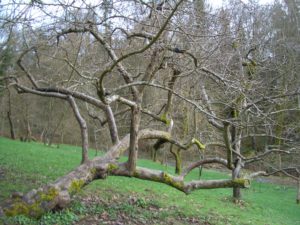 immediately after buying it, I began clearing it and planting seeds and bulbs and bushes. Forgetting what Adam and Eve had learned, I also planted apple trees. Eventually we built a house there and eventually we retired there, and for twenty years I combined a rural ministry with the work of a gardener. Last week the new owner sent me a picture of daffodils that I had planted and he had picked.
immediately after buying it, I began clearing it and planting seeds and bulbs and bushes. Forgetting what Adam and Eve had learned, I also planted apple trees. Eventually we built a house there and eventually we retired there, and for twenty years I combined a rural ministry with the work of a gardener. Last week the new owner sent me a picture of daffodils that I had planted and he had picked.
The Bible is full of surprises. There’s always something more to see and understand. On Good Friday I took part in or watched several zoom and You Tube services and heard or read the story of Jesus’ death at least four times and St. John finally got me to pay attention to a small point that he had embedded in his gospel for me to notice: they buried Jesus in a garden.
Now, John is always asking us to notice the relationship between his gospel and the story of Creation. John’s Gospel, 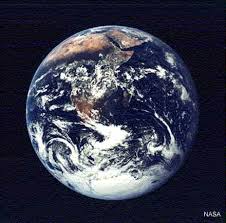 like the Book of Genesis. is all about beginnings. The first verse of the Book of Genesis tells us, “In the beginning, God created the heavens and the earth.” John’s Gospel begins, “In the beginning, was the Word and the Word was with God and the Word was God.”
like the Book of Genesis. is all about beginnings. The first verse of the Book of Genesis tells us, “In the beginning, God created the heavens and the earth.” John’s Gospel begins, “In the beginning, was the Word and the Word was with God and the Word was God.”
In the same way, the Book of Genesis tells us that God spent six days in creation, and John’s Gospel tells us about six signs that Jesus did, and he even numbers them so we’ll notice. “Jesus did this, the first of his signs, in Cana of Galilee,” for example, or “Now this was the second sign that Jesus did.” After that, John doesn’t flag them for us but lets us figure it out for ourselves.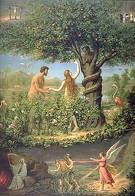
What I hadn’t noticed until this year was what John shows us about gardening. Genesis tells us that God planted the first garden and placed the man in it to care for it. But the man and his wife messed up and got driven out and the man was sentenced to life as a gardener. Hey, it could have been worse! Suppose he had condemned the man to live in a city! But we did that to ourselves.
What John tells us (none of the other gospels notices) is that they buried Jesus in a garden. Yes, and when Mary Magdalene stayed weeping at the empty tomb on Easter Day, John tells us she failed to recognize Jesus because she thought he was the gardener! Well, he was – and is! He had planted the first garden East of Eden and he continues to challenge us to make the soil fruitful because our lives depend on it.
The great nineteenth century English poet, Gerard Manley Hopkins, wrote a sonnet on the subject:
The world is charged with the grandeur of God.
It will flame out, like shining from shook foil;
It gathers to a greatness, like the ooze of oil
Crushed. Why do men then now not reck his rod?
Generations have trod, have trod, have trod;
And all is seared with trade; bleared, smeared with toil;
And wears man’s smudge and shares man’s smell: the soil
Is bare now, nor can foot feel, being shod.
And for all this, nature is never spent;
There lives the dearest freshness deep down things;
And though the last lights off the black West went
Oh, morning, at the brown brink eastward, springs—
Because the Holy Ghost over the bent
World broods with warm breast and with ah! bright wings
Sometimes we despair of getting it right. We destroy the soil with chemicals and wash it into the sea. We pave it with concrete. We burn down the forests. We may well wonder whether Hopkins is overly optimistic in saying that “nature is never spent.” But St. John has left us an Easter message of hope: God is the gardener and is able to bring new life even out of the sealed tomb.
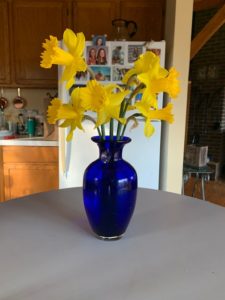
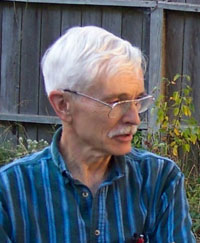 Christopher L. Webber
Christopher L. Webber
Thank you,Chris! Happy Easter!
Thanks for this memory, Chris. Oddly, I had seen that Hopkins poem a few days ago and passed it around Chapel of All Saints. We too are Zoom meeting. Blessings for Easter!
Beautiful Chris.Thank you. Thinking of you and the memory of you and Peg. All best wishes and love at this time of rejoicing in The Resurrection.
Thank you, Chris, and thanks to Myron for forwarding your meditation to me. Two things to add, which you know about but rightly belong more to a footnote than to the text: 1. The identity of the Risen Christ as the Gardener is emphasized in Eastern Orthodox spirituality. So Mary Magdalene is not seen as being confused at all, but quite right. 2. The association of Easter with the renewal of spring and gardening is not true in the southern hemisphere, when fall is heading into winter at Easter. That for Karl Barth was a better association for Easter, because to him Easter was not a “because” but a “nevertheless.” (Of course, as all gardeners know, gardening in the fall is just as crucial in the spring, preparing the soil, pruning, etc., so there’s no need to quibble.) Happy Eastertide, with love in the time of COVID-19.